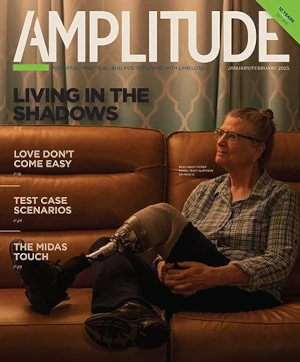Researchers funded by the National Institute of Biomedical Imaging and Bioengineering (NIBIB) have developed a smartphone-based device that can reliably carry out molecular diagnoses in under an hour for approximately $2 per patient. The device could enable point-of-care cancer diagnostics in low- to middle-income or remote areas, which often have high rates of mortality from cancer due to missed opportunities for treatment.
“In these areas, patient samples often have to be shipped to facilities that are capable of carrying out conventional pathology services,” said Richard Conroy, PhD, program director for Molecular Imaging at NIBIB. “As a result, it can take several days before a diagnosis is returned to the patient. In many cases, patients aren’t able to return for follow-up care either because they have to travel long distances to reach a clinic or can’t afford to take multiple days off work. A low-cost technology that can diagnose cancer at the point-of-care would enable patients to begin treatment on the same day that they are tested, greatly increasing the number of patients who receive treatment.”
The development of the new device was led by Hakho Lee, PhD, an associate professor in Radiology at Harvard Medical School/Massachusetts General Hospital, Boston, and Ralph Weissleder, MD, PhD, director of the Center for Systems Biology at Massachusetts General Hospital. They describe their device in the journal PNAS.
According to Lee, molecular diagnostics have been difficult to perform at the point-of-care due to a lack of infrastructure and trained personnel.
“To carry out molecular diagnostics currently, you need a good microscope, you need antibodies or ligands that can recognize a molecular target, and you need a specialized person who can interpret the data. Right now, those three things are hard to obtain in point-of-care settings,” said Lee.
The new device-called the D3 (digital diffraction diagnosis system)-is made up of a smartphone and an imaging module that snaps onto it, consisting of a battery-powered LED light and a lens.
“The speed at which this technology can diagnose disease is extremely impressive,” said Conroy. “The researchers have taken a process that sometimes takes several days using conventional pathology methods and have condensed it to under an hour. In addition, by taking advantage of cloud-computing and smartphone technology, they’re making the technology available to those who need it the most and for a very low cost.”
In addition to cell surface protein detection for identifying cancer cells, the system can also be adapted to detect DNA, which opens the door for rapid diagnosis of infectious diseases in addition to cancer.
This article was adapted from information provided by NIBIB.




